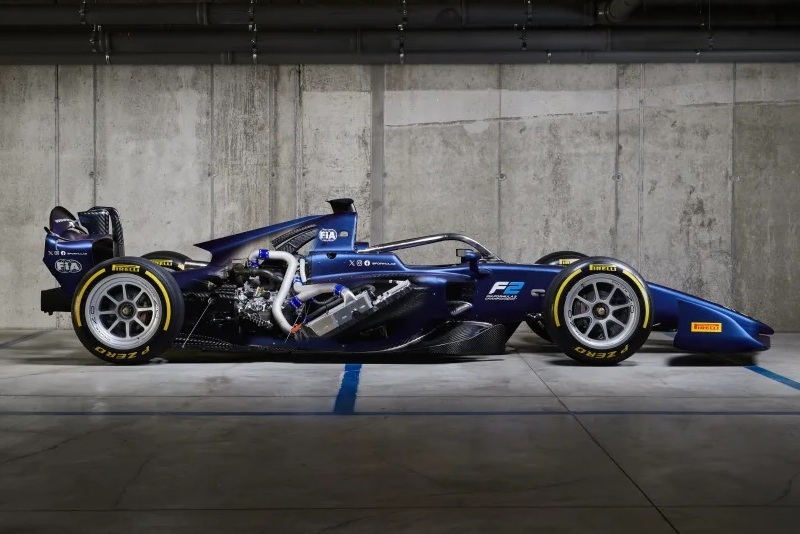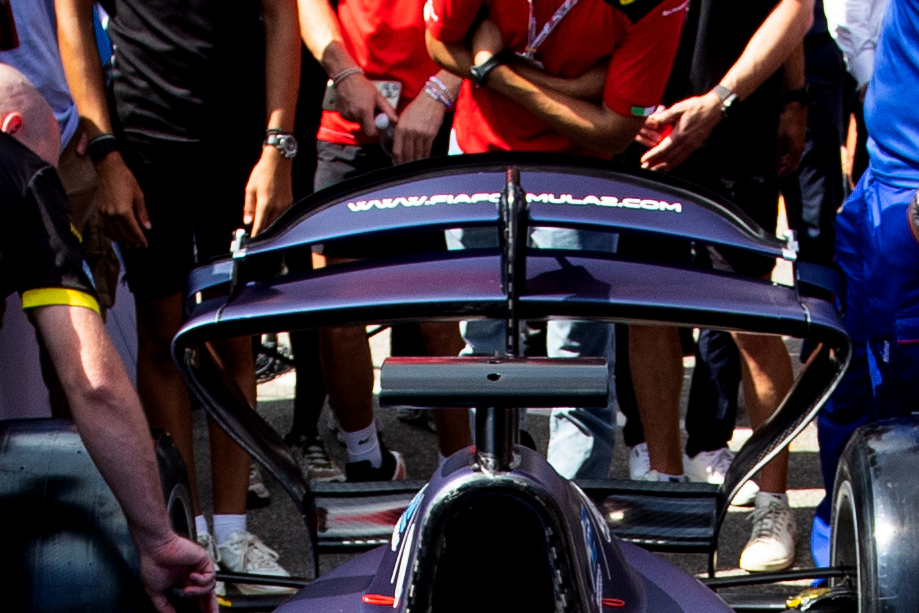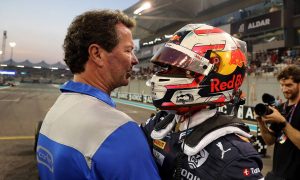
The FIA Formula 2 Championship has taken another step into the future with the unveiling on Thursday at Monza of its next-generation car that will compete from 2024.
The striking new contender which features a series of updates and innovations, like its bold rear-wing design, has been conceived by Dallara as a more accessible and cost-effective proposition for teams and drivers.
But also as a car that more closely resembles Formula 1's current generation designs, with advances in "safety, performance, aesthetics and internal systems, with the goal of making racing exciting for the F1 community and motorsport fans".
Sporting all-new aerodynamics from front to rear that should allow for closer wheel-to-wheel action, F2's new-spec machine is still powered by the trusty 3.4 litre turbocharged engine produced by Mecachrome and fed with a 55% bio-sourced sustainable fuel provided by Aramco.
Read also:
"Together with the FIA, we’ve designed a powerful, challenging and safe car that will prepare young drivers for F1, and that will continue to provide great racing and a lot of overtaking opportunities, something that the fans expect from F2," commented Formula 2 CEO Bruno Michel.
"It has been designed also to fit all types of drivers, taking into account FIA’s consideration regarding the steering effort. This is obviously key to making our sport more inclusive, by enhancing our car’s driveability and comfort.
"One of our main focuses remains costs control. So, we have kept the same engine and gearbox, and there are a lot of carried-over parts from the previous car.
"Finally, we made sure that the teams can manage this new car with 12 operational people, as per the Sporting Regulations."

The car's radical rear wing – which incorporates a rounded upper flap that extends upwards like a duck tail – captured onlookers' attention in the paddock at Monza.
But the concept isn't merely the result of a creative aesthetic exercise conceived by Formula 2. It has a distinct purpose: to enhance the spectacle on the track.
"The rear wing itself has a round shape that is quite close to what F1 is having at the moment," explained Michel.
"The big difference is probably what you saw, which is the flap that is quite heavy and big. That's really been done to make sure that, with the kind of set-up that we have at the car, we can have extremely strong DRS efficiency."

The design may offer a glimpse into a future F1 concept given the sport's anticipated move towards active aerodynamics in 2026.
"F2 has been pioneering for a few things for F1 in the past," added Michel. "And we'll continue to do it.
"It started with 18-inch tyres before F1, and it helped Pirelli quite a lot in their development. F2 is working with sustainable fuel already now.
"And I think there are a lot of things that we can put in place in F2, and that will be implemented in F1 later on."
Keep up to date with all the F1 news via Facebook and Twitter






